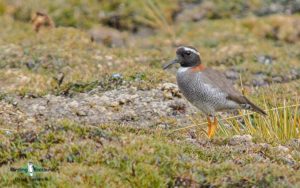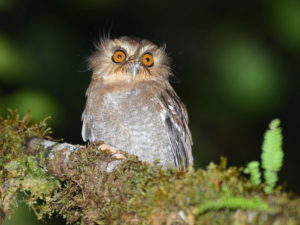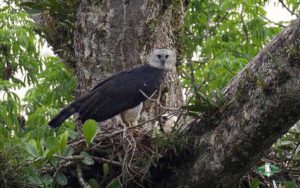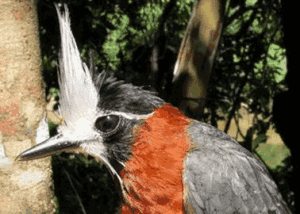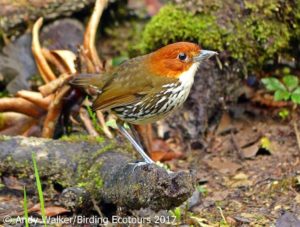Go to All Blogs | Neotropical Blogs | Peru Birding Tours | All our birding tours
By Eduardo Ormaeche, updated December 11, 2023
Diademed Sandpiper-plover
This is definitely my favorite bird in South America. What can I say? Strangely, I cannot explain why I feel so attracted to this bird, which is also the favorite of many other birders. The legendary Diademed Sandpiper-plover is a big target in the high Andes of South America, especially on our Central Peru Birding Adventure.
There is no way to describe the immense satisfaction of finding this classic bird in the Peruvian Andes at 15,400 feet (4,700 meters) above sea level and the privilege of showing it to our clients and friends. If you desire to see this bird, you will need to put in some effort. 80 miles (130 kilometers) east of Lima city, where the bog cushions of Marcapomacocha lie at the base of the snow-capped mountains, and where the air is very thin – with little oxygen – you might have the magical experience (if you are lucky) of finding a pair of Diademed Sandpiper-plovers, possibly even with chicks. We have managed this on several of our Central Peru birding tours and even on our Lima day tours. They breed at high elevations in the Andes of Peru, Bolivia, and Chile, with only a few accessible places to look for them.
Long-whiskered Owlet
I used to live in Northern Peru for several years and had the opportunity to explore the area very well, including the famous Abra Patricia Mountains, even before the Long-whiskered Owlet Lodge was built. I and other folks have explored the moss-covered trails of the cloudforest in search of the mythical Long-whiskered Owlet. So many tries in the past with no success! At that time its vocalization was completely unknown – trying all night long, with full moon, with no moon, in the rain, we so often had to come back to the tent empty-handed. But since the call was recorded for the first time in 2008 and the local NGO ECOAN built the lodge and actually found the territory of the owlet, the chance of finding one of the most enigmatic birds in the world is very high.
Looking for the owlet is not an easy task, since it involves hiking on steep terrain and waiting in the dark. It has not yet been seen during the day, and most of its behavior is still unknown. But again, the euphoria is indescribable when we sense the bird responding, coming closer and closer, then we suddenly turn the spotlight on and this bird is two meters in front of us. One’s heart beats fast in one’s chest!
(Photo Alan van Norman)
Marvelous Spatuletail
This fantastic hummingbird has become one of the most wanted bird species to see in Peru, and is the symbol of conservation in the cloudforest of northern Peru. It occurs in secondary semi-deciduous woods and in a few patches of cloudforest on both banks of the Utcubamba River in the Amazonas department of northern Peru. This is one of the most beautiful landscapes in the country, full of waterfalls, green mountains, deep canyons, gorges, mountain rivers, caves, and the remains of the ancient Chachapoyas culture. This civilization flourished here before the time of the Incas, and built huge stone works as large as those of the Incas.
The bird’s most remarkable feature is the male’s two long racket-shaped outer tail feathers, which cross each other and end in large, violet-blue discs or “spatules”. The bird can move them independently.
I remember how, during our first Birding Ecotours trips to Peru in 2004 and 2005, we had to walk on steep terrain to reach patches of forest that allowed us only brief glimpses of the bird. Gladly, since sugar feeders have been set up in the localities of Huembo and Leymebamba, one can truly enjoy longer views of what is surely one of the most gorgeous creatures on the planet.
Buff-fronted Owl
Even though this is not a classic bird of the typical northern Peru circuit (it’s scarce and localized in several South American countries),Birding Ecotours, thanks to the help of the local NGO San Antonio Reserve, found a reliable location not far from the town of Chachapoyas. We were the first company to take clients there with the mission of finding and photographing this rarity. If you really want to score, the best way is to camp in the reserve and wait until dusk, when the owl starts calling (as we did in 2012). We heard it and tracked it and were rewarded with this unbelievable view. This prized owl was celebrated with a single malt scotch!
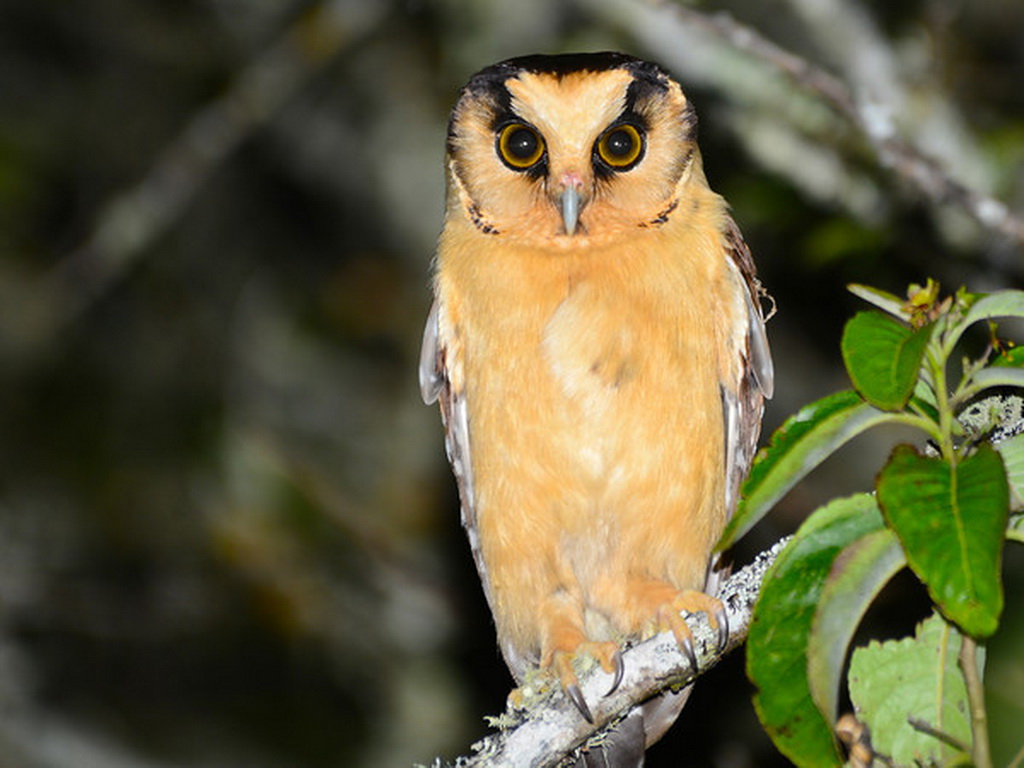
Harpy Eagle
Amazing, very large, one of the most powerful eagles in the world, this is the dream of every birder who comes to the Neotropics. Even though widely distributed on the continent, the Harpy Eagle is rare everywhere, and sightings are either by chance or because an active nest has been detected somewhere in the rainforest. Even though one can see the Harpy Eagle (with luck) in Venezuela, the Guyanas and Brazil, there is a healthy population in the Peruvian rainforest, especially in Manu National Park and Tambopata National Reserve, where we have seen it in the surroundings of the Refugio Amazonas Lodge.
Golden-backed Mountain-Tanager
A large and striking mountain tanager endemic to the elfin forest of Central Peru, this bird occurs at 9,800 – 11,800 feet (3,000 – 3,600 meters) elevation. The search for the Golden-backed Mountain Tanager is for the most adventurous birders. To reach Bosque Unchog in the Huánuco district in Central Peru, be prepared to deal with low, humid temperatures, high elevation, moderately steep walks, and the possibility of having to camp in such an environment. Fortunately, in the process, one may enjoy other sought-after species like Bay-vented Cotinga, Rufous-browed Hemispingus, Pardusco, Undulated Antpitta, Swallow-tailed Nightjar, and Brown-flanked Tanager. Due to habitat loss the species is considered Endangered; it is vanishing and getting harder to find. If we are lucky, we could score during a single-day visit, but we normally plan to spend at least two full days in the area. A gem for tanager fanatics!
Birding Ecotours has organized successful tours in Central Peru since 2004.
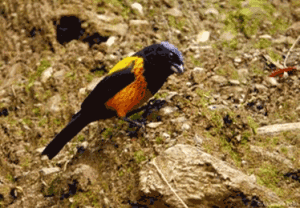
White-capped Tanager
This bird is another of my favorites in northern Peru and can also be found on our tours to Ecuador and Colombia. This is considered the heaviest member of the Thraupidae family. These birds do not occur in mixed flocks with other species but forage in single flocks of four to ten individuals. They are very noisy when they call and travel through the forest canopy, especially in open areas, and can come in aggressively responding to playback from some distance. I have noted on a few occasions that they travel not with, but close to, White-collared Jays as the jay itself sometimes does with mountain caciques. The call and behavior of the White-capped Tanager does not seem to fit with those of most of the tanagers. The mountains of Abra Patricia are a great place to look for this species.
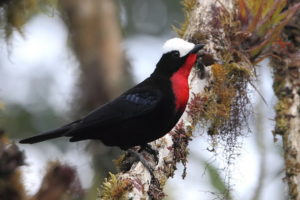
White-plumed Antbird
The Antbird family (Thamnophilidae) encompasses nearly 50 genera and more than 230 species, plus numerous subspecies, and is endemic to the Americas. The family contains groups such as the Antshrikes, Antwrens, Antvireos, Antbirds, and others. Most of them are skulkers, secretively living in the forest understory, but many occupy other habitats as well. Many have similarly cryptic coloration that varies from sooty gray to black, brown, and other dusky colors, earning them the unjustified title of “A things” or “little brown jobs” – definitely not true of beautiful and sought-after species like Ocellated Antbird, Scaled Antbird, Ferruginous-backed Antbird, Harlequin Antbird, White-breasted Antbird and Bare-crowned Antbird.
Some of the antbirds are professional ant-followers, which means they are found in mixed flocks, together with other antbirds, woodcreepers, and even some tanagers, following the swarms of army ants on the Amazon rainforest floor. The aim is not to feed on the ants themselves but to steal the prey the ants are carrying.
My favorite is the White-plumed Antbird. As a tour leader, I derive great satisfaction from showing this hard-to-find species to clients, the reward for successfully completing the challenge this species poses. We first found the White-plumed Antbird in terra firme (non-flooded) Amazon forest on our tour to Iquitos, a tailor-made extension of our Northern Peru tours.
Any Antpitta
We are crazy about Antpittas (Grallariidae). The reason probably lies in the difficulty in observing them, since they can remain for what seems like forever in thick bush without coming out or even moving much. They can be a few meters in front of you, and you won’t be aware of their presence. In order to see some of the most secretive species, birders have to leave the trail and walk – or rather crawl – into the bush, looking for a tiny hole-like window that may provide a view of this prized bird. There is no better reward than finding an antpitta for clients. Northern Peru possesses some endemic species such as Pale-billed Antpitta, Chestnut Antpitta, Rusty-tinged Antpitta, and Ochre-fronted Antpitta. The new trend of attracting antpittas with worms has revolutionized the experience of finding them, especially in Ecuador and Rio Blanco, Colombia, where one can see five species in one hour on our Colombia birding tours, allowing better views, observing more of the behavior, and providing better photo opportunities. Nevertheless, finding an antpitta in the bush – if you have the time and patience – is far more rewarding.
Here is a good picture of one of the most widespread species, the Chestnut-crowned Antpitta.
Chestnut-crested Cotinga
Another one of my favorite birds in Peru, even though it is not endemic and also found on our tours to Bolivia and Colombia, is Chestnut-crested Cotinga. It is really great to have scope views of this species in the Abra Patricia Mountains, where it sometimes perches exposed in the top of a tree. Other places to find this bird are the Paty Trail in Central Peru and the famous Manu Road below the Wayquecha Biological Station.
